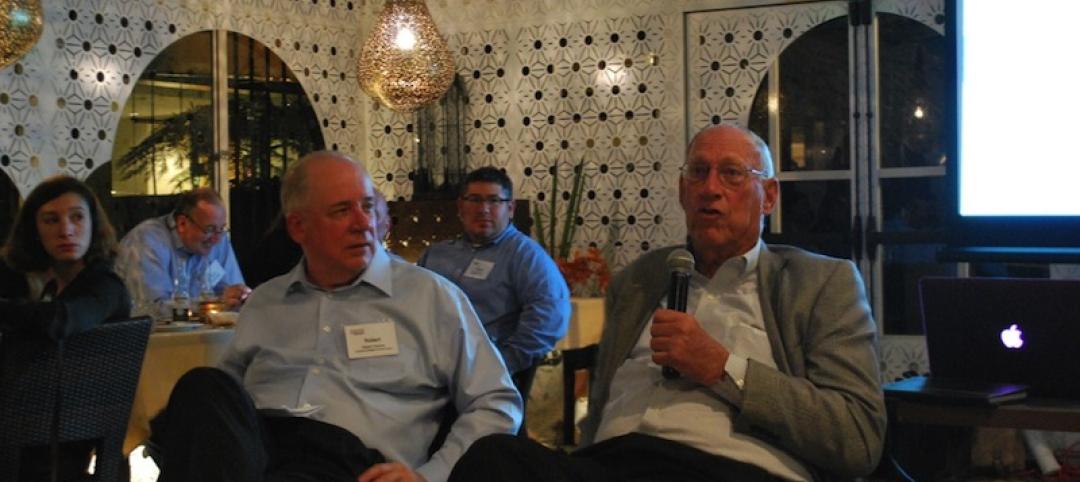U.S. engineering firm CEOs remain encouraged about overall company performance and market trends. They also see strong signs of recovery in industry employment, this according to the latest ACEC Engineering Business Index (EBI), which charts the health of the engineering industry.
EBI is a diffusion index, consolidating hundreds of engineering leader responses nationwide on market and firm performance into a single “confidence” number. Any score over 50 indicates expansion.
The third quarter EBI (Q3), conducted Sept. 17 to Oct. 3 of 275 engineering CEOs, presidents and chairmen, produced a positive composite score of 68.8, virtually unchanged from 68.9 in the second quarter.
Survey respondents reported a strong rebound in hiring: 67.4% said employment at their firm was equal to or higher now than pre-recession (2008) levels; 25% said employment was “at least 10%” higher. Only 32.7% said employment was lower.
Engineering leaders remained encouraged by company performance: 65% reported higher backlogs compared to this time last year—significantly more than the 51% in the second quarter. Almost half of Q3 respondents (49.3%) expect backlogs to increase further over the next 12 months.
Respondents also believe most private markets will continue to thrive: 61.7% expect improvement over the coming year in Land Development, 56.1% in Energy and Power, and 53.1% in Buildings and Commercial.
Public market expectations, however, continue to lag: only 43.8% of respondents believe the Water and Wastewater segment will improve by next year; only 39.7% said Transportation will improve.
For the complete Q3 summary of ACEC’s Engineering Business Index (EBI) go to www.acec.org.
Related Stories
| Oct 10, 2013
Carnegie Mellon study looks at impact of dashboards on energy consumption
A recent study by Carnegie Mellon took a look at the impact of providing feedback in an energy dashboard form to workers and studying how it impacted overall energy consumption.
| Oct 10, 2013
Arthur Gensler to architects: Don't give away your ideas
M. Arthur Gensler, Jr., FAIA, FIIDA, RIBA, founder of the world’s largest architecture firm, Gensler, offered important advice to more than 65 young AEC stars attending BD+C's Under 40 Leadership Summit in San Francisco, which kicked off last night at the Hyatt Regency San Francisco.
| Oct 10, 2013
Arthur Gensler to architects: Don't give away your ideas
The founder of Gensler advises dozens of up-and-coming AEC professionals at BD+C's Under 40 Leadership Summit in San Francisco.
| Oct 9, 2013
From power plant to office: Ambler Boiler House conversion
The shell of a 19th-century industrial plant is converted into three levels of modern office space.
| Oct 9, 2013
SOM gets second crack at iconic modernist structure in New York
More than 50 years after SOM completed the Manufacturers Hanover Trust building, the firm is asked to restore and modernize the space.
| Oct 8, 2013
Toronto Maple Leafs arena converted to university recreation facility
Using steel reinforcement and massive box trusses, a Building Team methodically inserts four new floors in the landmark arena while preserving and restoring its historic exterior.
| Oct 7, 2013
Nation's first glass curtain wall exterior restored in San Francisco
The Hallidie Building's glass-and-steel skin is generally recognized as the forerunner of today’s curtain wall facilities.
| Oct 7, 2013
10 award-winning metal building projects
The FDNY Fireboat Firehouse in New York and the Cirrus Logic Building in Austin, Texas, are among nine projects named winners of the 2013 Chairman’s Award by the Metal Construction Association for outstanding design and construction.
| Oct 7, 2013
Progressive steel joist and metal decking design [AIA course]
This three-part course takes a building owner’s perspective on the range of cost and performance improvements that are possible when using a more design-analytical and collaborative approach to steel joist and metal decking construction.
Sponsored | | Oct 7, 2013
Bridging the digital divide between the BIM haves and have nots
There's no doubt that BIM is the future of design. But for many firms, finding a bridge to access rich model data and share it with those typically left on the sidelines can be the difference between winning a bid or not.
















